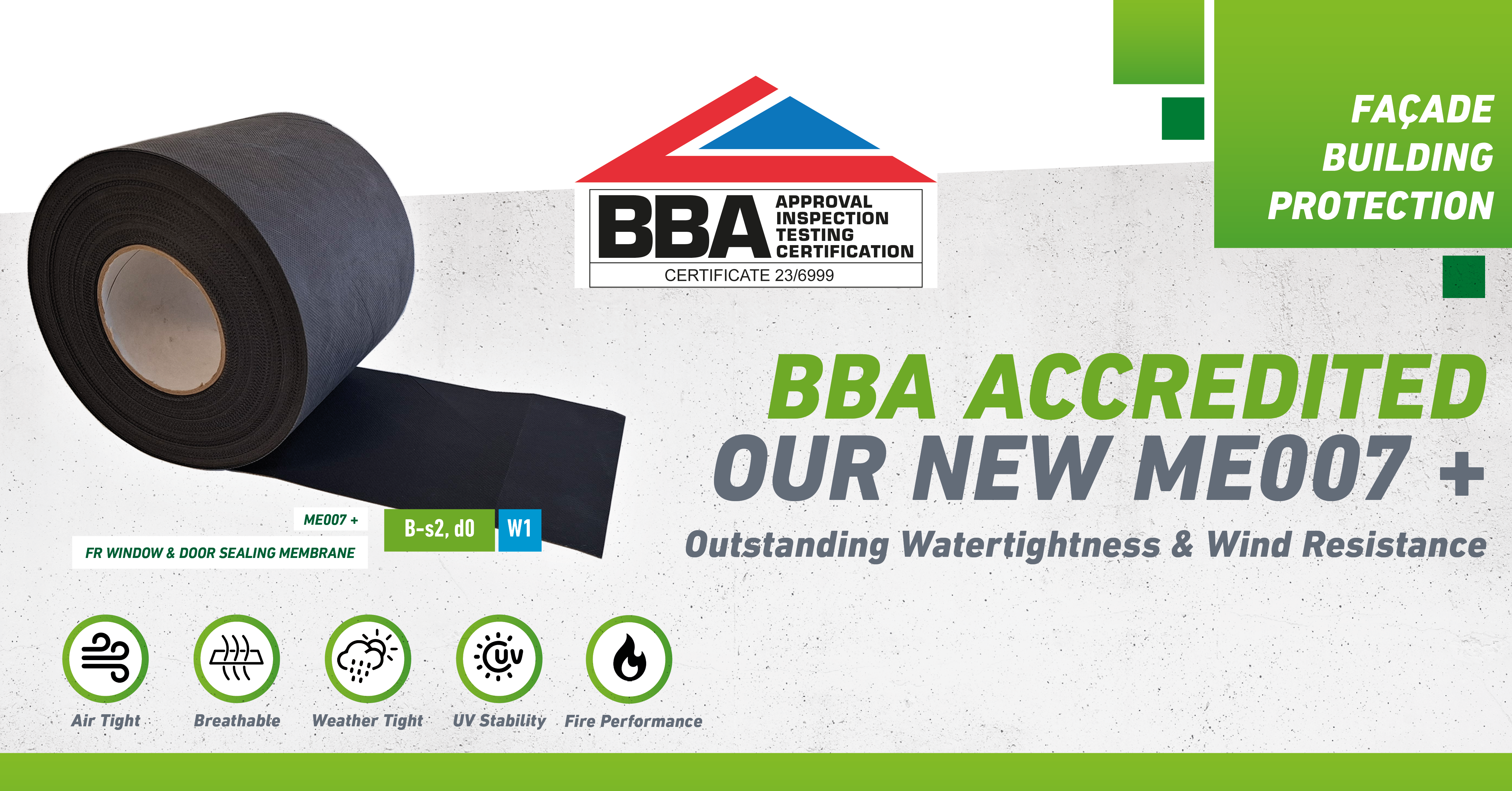Breather Membranes - W1 or W2 Water Resistance
Breather membranes are an important part of the building envelope, as they protect the wall element and in particular the insulation layer from wind-driven rain and water exposure during the construction phase of the project. They also allow any trapped moisture within the wall elements to escape from the interior of a building to the outside. After the construction is complete, they also play a key role in providing continued protection for the service life of the building.
When determining which breather membrane to select for a particular construction, the specifier or end user should always consider the key properties of the membrane relevant to the level of protection required, the duration of the build, the location of the project, and the properties of the finished cladding system specified.
Currently, the water resistance of breather membranes is tested to EN 1928 using a 2 kPa head of water over 2 hours. These results are then further classified under the requirements given in BS EN 13859-2 giving a W1, W2, or W3 rating.
Understanding the classification:
BS EN 13859-2 ranks these classes in descending order of water resistance from W1, to W3. To be used on a vertical façade of a building either a Class W1 or W2 resistance to water penetration is required (W3 classification is not suitable for wall/vertical applications).
It should also be noted that alongside the water resistance classification, all breather membranes should have water vapour resistance of < 0.6 MNs/g equivalent to an Sd value below 0.12 m as defined in BS 5250 : 2001.
Finally, the UV resistance of the membrane should also be understood, this is determined using an accelerated aging regime of 5000 hours as defined in BS EN 13859-2 and should be clearly stated by the manufacturer in their technical literature. The duration of UV resistance can vary from a couple of months to permanent UV resistance. At the end of the aging process, the water resistance and tensile properties of the membrane are retested to confirm these key properties are retained.
Membrane selection
The initial role of a breather membrane is to provide weather protection to the wall element during the construction phase. This includes protection of the frame, sheathing board, and insulation layers in a framed construction, and this protection is required temporarily until the final cladding or finish can be completed.
During the construction phase, the location of the building and its exposure to potentially severe weather should be considered alongside the anticipated duration of how long the membrane will be exposed to the elements.
Where the final cladding or finish will ultimately provide permanent weather and UV protection to the membrane, a Class W2 membrane can be specified. However, for very severe exposure locations as defined in BS 8104, a breather membrane with a water resistance of Class W1 should always be used.
As well as water resistance, the UV resistance of the membrane should be equivalent to the anticipated duration of the construction phase when the membrane will be protected by the installed cladding or finishing system.
Where an open jointed cladding is specified it is very important that the breather membrane is permanently resistant to UV as well as water resistant to Class W1. This ensures the membrane will perform as intended for the service life of the building to which it's installed.
Which geographical locations require W1 resistance?
When determining a suitable membrane classification for a building, one of the most commonly overlooked factors is the local conditions.
A membrane that achieves W1 water-resistance after UV aging is recommended to be used with full rain-screen cladding in locations that are known to be exposed to high winds and driving, persistent rain. These locations are typically found on high-altitude exposed sites and westerly coastal sites.
BS 8104 recommends that when specifying a breather membrane, architects use the local spell index method to determine the necessary level of resistance to rain penetration. One should also consider the NHBC Standard Section 6.1.16: Exposure which includes a map showing the concentration of the four zones across the UK. Any area within a 30-mile radius of a west-facing coastline will usually be considered to be a severe exposure area – meaning a W1 water-resistant membrane should be specified and installed.
Further guidance on the use of breather membranes can be found in STA Advice Note 18 and BS 5250: 2021.
How can illbruck support?
illbruck has a range of breather membranes, suitable for all applications. Our in-house specification team, will be able to provide support for architects, specifiers and designers in ensuring that the correct breather membrane is chosen for the project at hand.
Check out our range of breather membranes today: www.illbruck.com/en-GB











